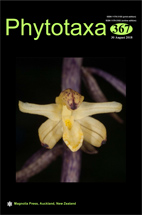Abstract
The recently established genus Desmonostoc was characterized by forming macroscopic colonies with diffluent mucilaginous envelopes embedding long vegetative filaments and possessing long chains of akinetes. The establishment of this new genus was further supported by the clustering of the 16S rRNA gene, which have a distinctive phylogenetic placement outside of Nostoc. In this study, a new cyanobacterial species was isolated from a wet rocky wall in Danxia mountain, Guangdong province, southern China, and the novel strains of this new species were evaluated by combining morphological characteristic and molecular data on the 16S rRNA gene and 16S-23S internally transcribed spacer (ITS). This new taxon was found to be closest to Desmonostoc species. The separation of the new species described here as Desmonostoc danxiaense, using morphological and molecular traits, was based on differences in phenotypic, 16S rRNA gene, ITS sequence and its secondary structure.

